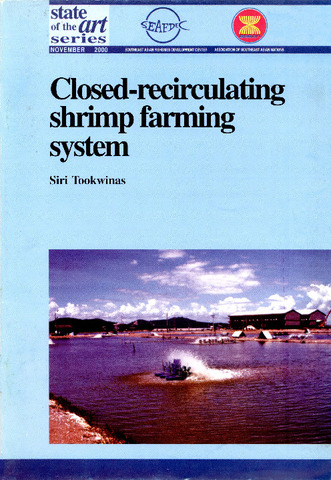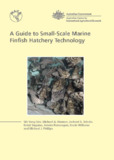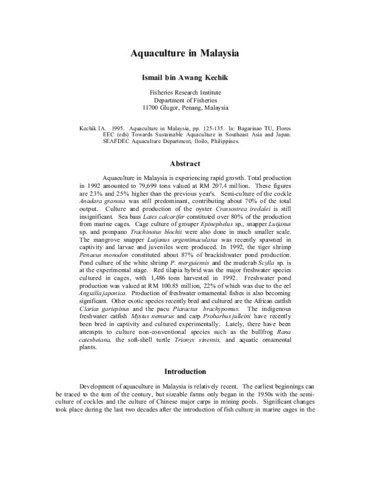Closed-recirculating shrimp farming system
- Global styles
- MLA
- Vancouver
- Elsevier - Harvard
- APA
- Help
Share
Abstract
This collaborative SEAFDEC/ASEAN project aimed to develop sustainable shrimp culture technology packages to address the problems in shrimp culture (e.g. discharges from shrimp farms threatening mangrove and marine ecosystems, clearing of mangrove forests to make way for shrimp ponds, etc.). In this context, a closed recirculating shrimp farming system is discussed touching on: pond preparation, water preparation, stocking, feeding, management, DO level, problems, record keeping, and harvesting.
Suggested Citation
Tookwinas, S. (2000). Closed-recirculating shrimp farming system. Tigbauan, Iloilo, Philippines: Aquaculture Department, Southeast Asian Fisheries Development Center.
Type
BookISBN
9718511482Series
State of the art seriesFormat
27 pages : illustrations ; 26 cm.
Collections
Related items
Showing items related by title, author, creator and subject.
-
Series: Asia-Pacific Marine Finfish Aquaculture Network; Publication No. 2005–01
A guide to small-scale marine finfish hatchery technology
Sim, Sih-Yang; Rimmer, Michael A.; Toledo, Joebert D.; Sugama, Ketut; Rumengan, Inneke; Williams, Kevin; Phillips, Michael J. (Network of Aquaculture Centres in Asia-Pacific, 2005)Recent improvements in hatchery production technology for high-value marine finfish species such as groupers have led to an increased interest in setting up hatcheries to produce fingerlings for aquaculture. Small-scale ... -
Aquaculture industry profile and trends
Yap, Wilfredo G. (University of the Philippines Aquaculture Society, Inc., 2001) -
Aquaculture in Malaysia
Kechik, Ismail bin Awang. (Aquaculture Department, Southeast Asian Fisheries Development Center, 1995)Aquaculture in Malaysia is experiencing rapid growth. Total production in 1992 amounted to 79,699 tons valued at RM 207.4 million. These figures are 23% and 25% higher than the previous year's. Semi-culture of the cockle ...






